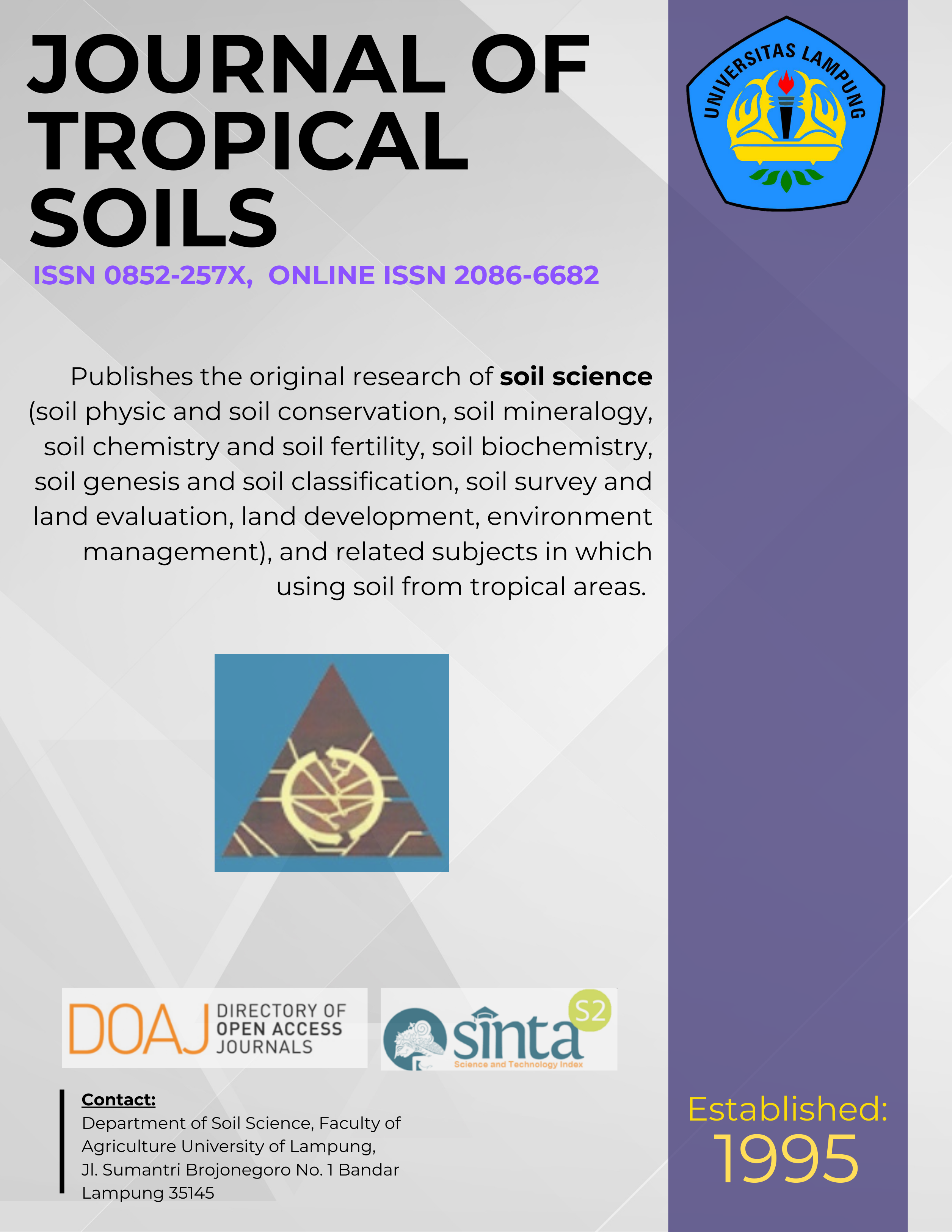Determination and Prediction of Some Soil Properties using Partial Least Square (PLS) Calibration and Mid-Infra Red (MIR) Spectroscopy Analysis
Main Article Content
Abstract
Soil chemical, physical and biological analyses are a crucial but often expensive and time-consuming step in the characterization of soils. Rapid and accurate predictions and relatively simple methods are ideally needed for soil analysis. The objective of this study was to predict some soil properties (e.g. pH, EC, total C, total N,C/N, NH4-N, NO3-N, P, K, clay, silt, and sand and soil microbial biomass carbon) across the Wickepin farm during summer season using a Mid-Infra Red - Partial Least Square (MIR–PLS) method. The 291 soil samples were analyzed both
with soil extraction procedure and MIR Spectrometer. Calibrations were developed between MIR spectral data and the results of soil extraction procedures. Results using the PLS-MIR showed that MIR-predicted values were almost as highly correlated to the measured value obtained by the soil extraction method of total carbon, total nitrogen and soil pH. Values for EC, NH4-N, NO3-N, C/N, P, K, clay, silt, sand, and soil microbial biomass carbon were not successfully predicted by the MIR – PLS technique. There was a tendency for these factors to correlate with the MIR predicted value, but the correlation values were very low. This study has confirmed that the MIR-PLS method can be used to predict some soil properties based on calibrations of MIR values.
Keywords: MIR-Partial Least Square, MIR-Spectroscopy, soil properties
Downloads
Article Details
Issue
Section
License for Authors
Authors who publish with this journal agree to the following terms:
- Authors retain copyright and grant the journal right of first publication with the work simultaneously licensed under a Creative Commons Attribution License that allows others to share the work with an acknowledgement of the work's authorship and initial publication in this journal.
- Authors are able to enter into separate, additional contractual arrangements for the non-exclusive distribution of the journal's published version of the work (e.g., post it to an institutional repository or publish it in a book), with an acknowledgement of its initial publication in this journal.
- Authors are permitted and encouraged to post their work online (e.g., in institutional repositories or on their website) prior to and during the submission process, as it can lead to productive exchanges, as well as earlier and greater citation of published work (See The Effect of Open Access).
License for Regular Users
Other regular users who want to cite, distribute, remix, tweak, and build upon author’s works, even for commercial purposes, should acknowledge the work’s authorship and initial publication in this journal, licensed under a Creative Commons Attribution License.

